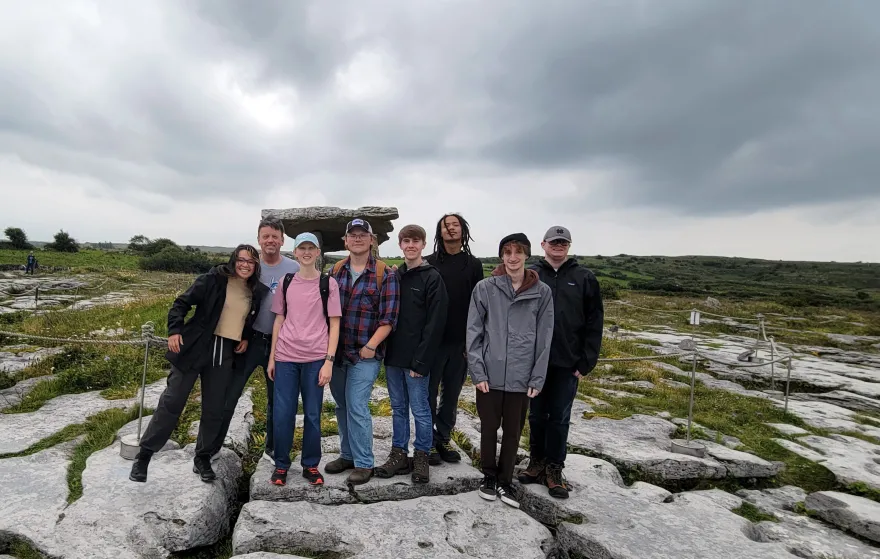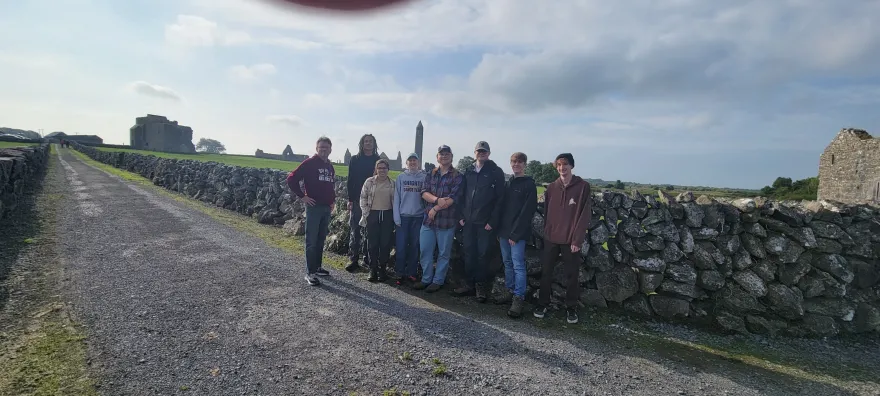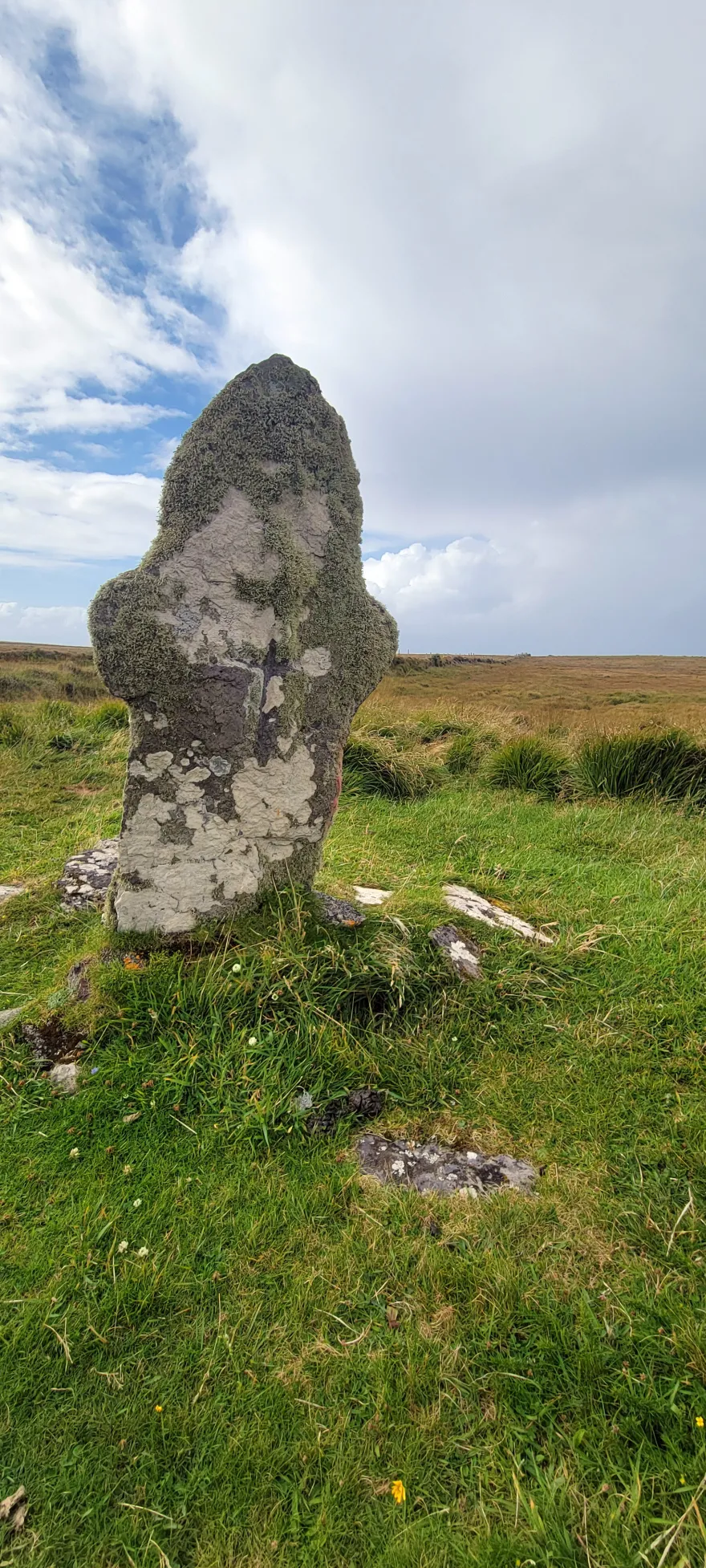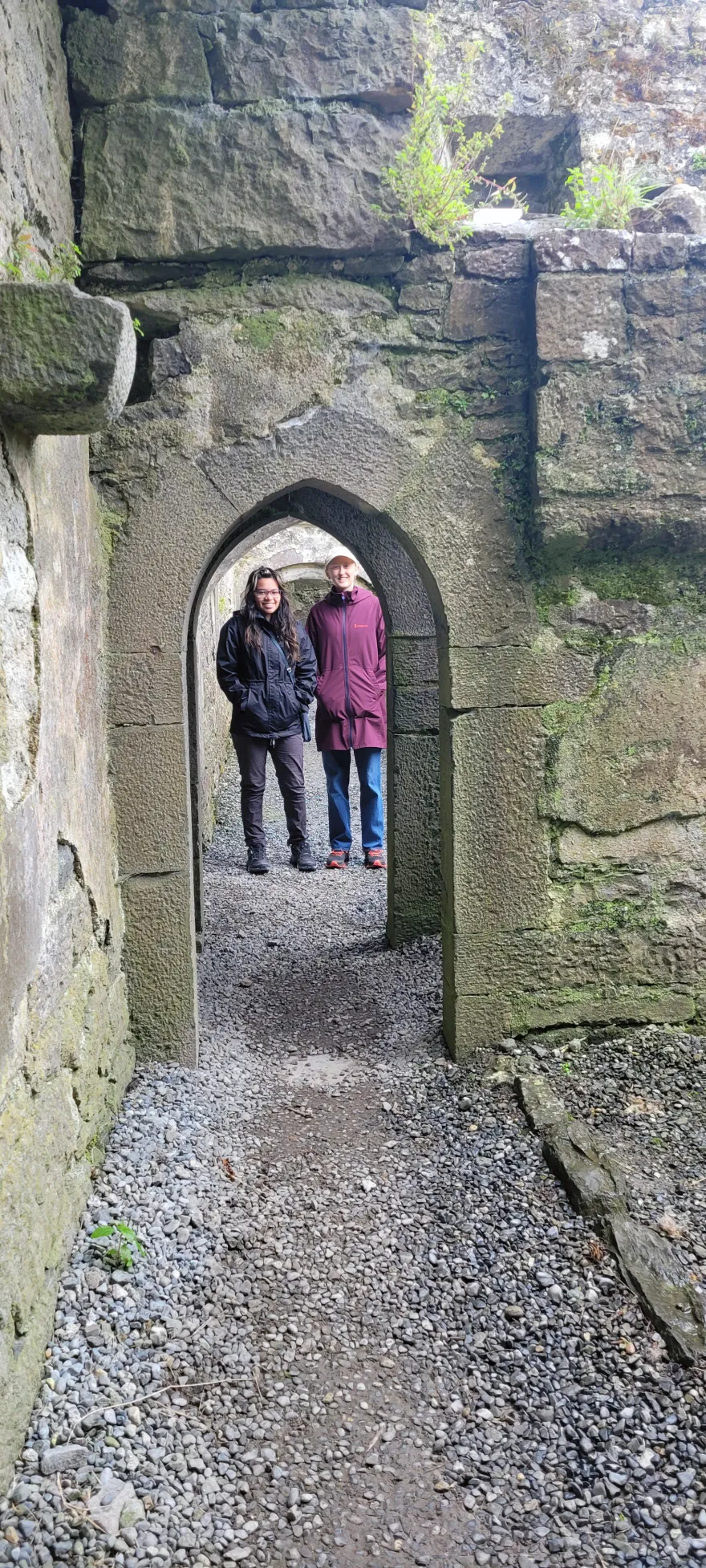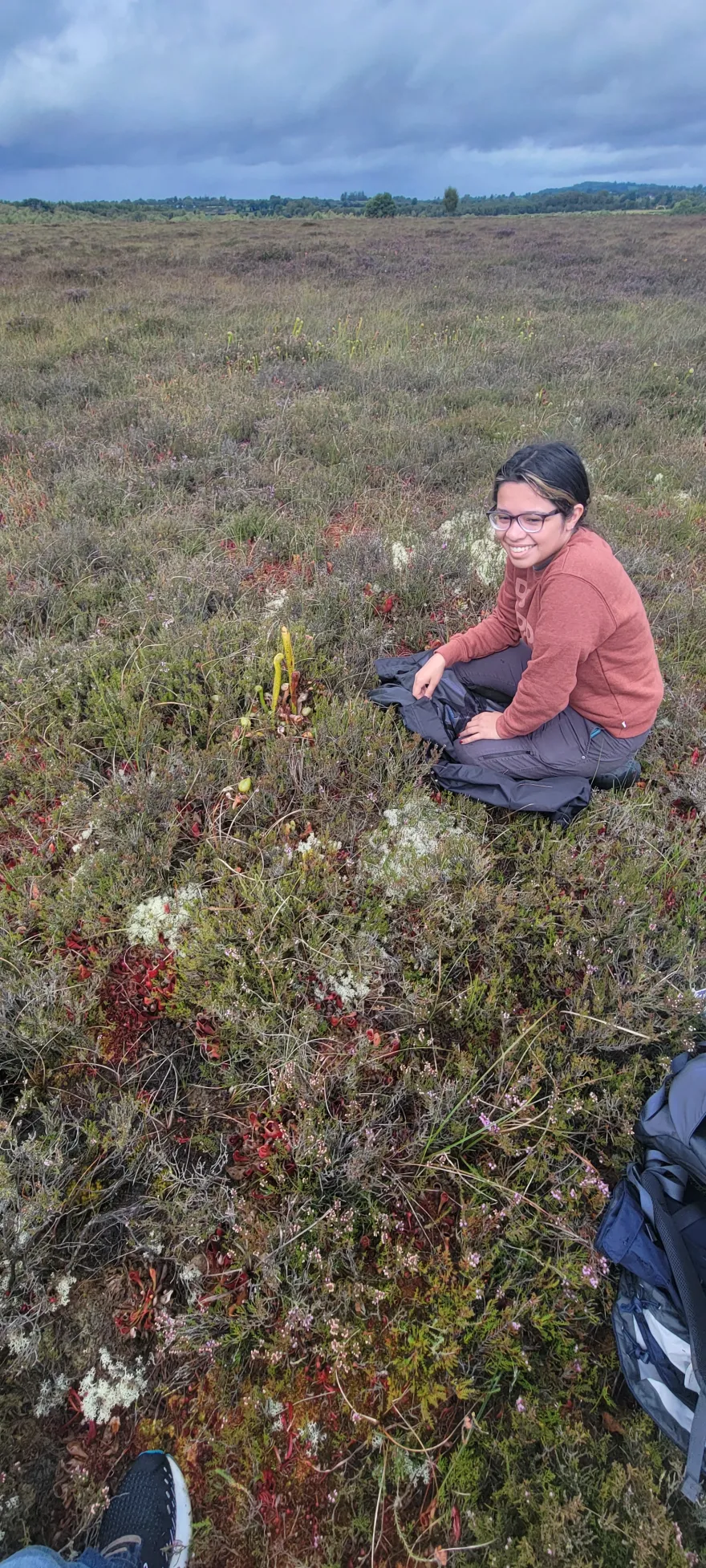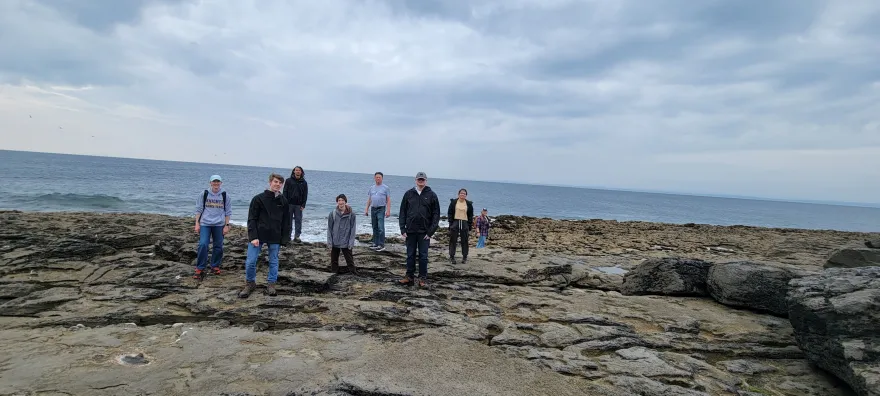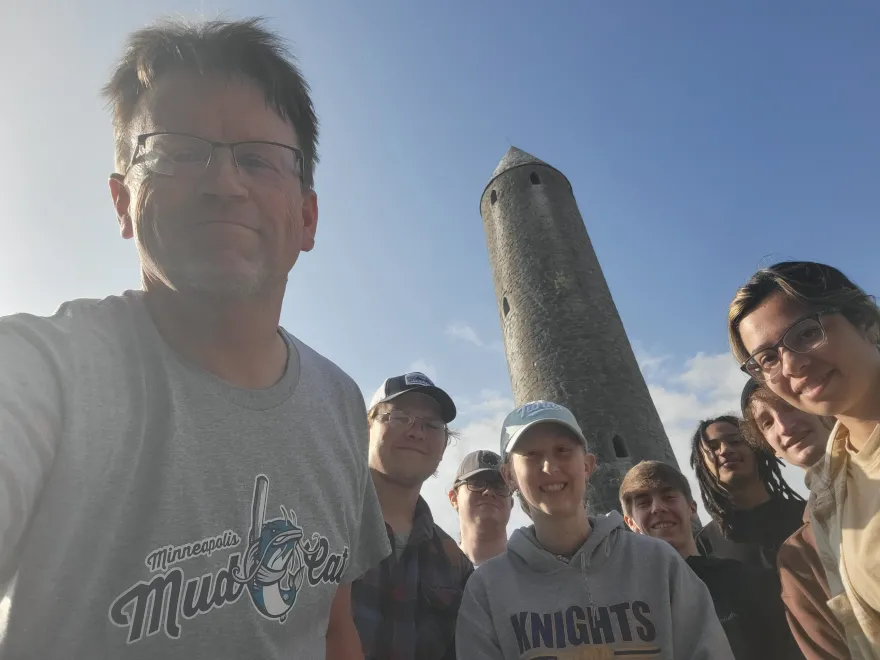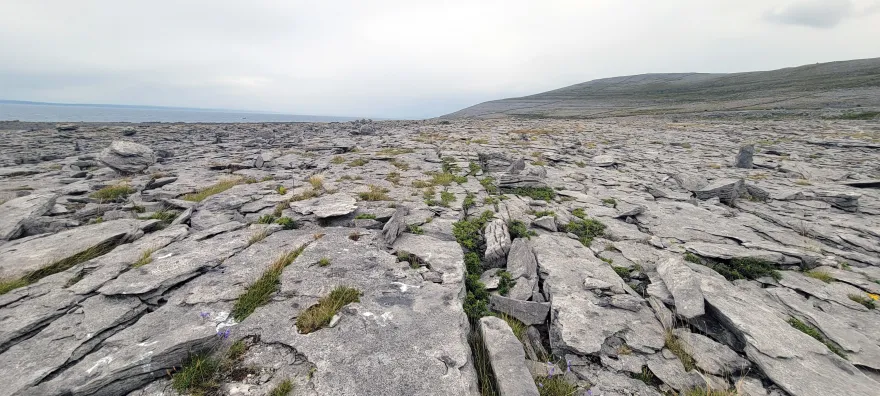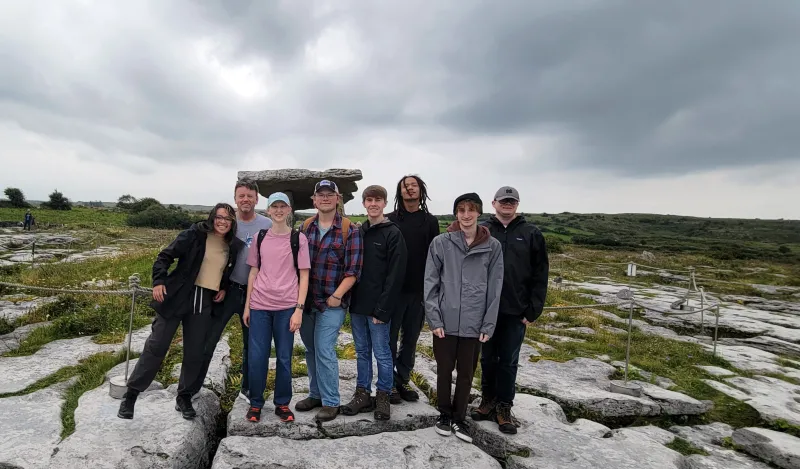
For Paul Melchior, the opportunity to teach and conduct research in Ireland with biology student began in 2009. During his sabbatical that year, Melchior was a visiting lecturer and researcher at the Galway-Mayo Institute of Technology, which subsequently became Atlantic Technological University (ATU), a public institution in Galway, Ireland. For that experience, Paul and his family spent seven months living in the west coast city of Galway.
After returning to NHCC, he and colleagues at both institutions forged a study abroad program that allowed students from NHCC and Bemidji State University, with whom NHCC has a biology baccalaureate partnership (BPP), to spend a semester in the marine biology program at ATU. The first cohort of students spent the 2013 fall term at ATU, taking classes with their Irish counterparts and participating in an undergraduate research project that merged biology, Irish culture and history. This fall, seven NHCC/BSU biology students will meet Melchior in Galway, marking the fifth run of this Biology Study Abroad Program in Ireland.
Because ATU, like NHCC, is not a residential campus, participating students stay with Irish host families in an around Galway, a city founded nearly nine centuries ago. Students take pre-arranged courses in biology that have course equivalents in the NHCC/BSU program. Other experiences include time at sea or Irish Marine Institute research ships, such as the Tom Crean, where students get hands-on experience that may include sonar ocean floor mapping, fishing trawl catch analysis, and sea bird and mammal surveys. Amazing experiences on a state-of-the-art laboratory ship.
Overall, this study abroad opportunity in Ireland serves as a phenomenal, immersive experience. The total 2024 cost for the term, including tuition, airfare, room and board, and transportation is approximately $9,500 for the semester.
Studying abroad is often a life-changing experience. Last March, Two NHCC/BSU BPP alums, Sophia Tracy and Zach Payne, who studied in Ireland in 2013 and 2015, respectively, married at Ballintuber Abbey in County Mayo, Ireland. Why there? “We each visited that beautiful place while doing field research with Paul, and fell in love with the place,” said Tracy.
During his 2009 sabbatical, Melchior stumbled upon St. Brigid’s holy well in County Clare, and learned that such sites had extraordinary histories and importance to the local population. After watching several people wash their faces and hands in the basin, and others drink from the same pool, he became curious about the potential of infection transmission at these wells.
While working out the details of the study abroad program, Melchior conceived a faculty-directed research project that would allow participating students to join him in field and lab research, while learning about a unique aspect of Irish culture and history. Noting that most of these Irish sacred sites were surrounded by pastures with sheep and cattle – common sources of food and water-borne microbial contamination - he worked with the Archaeological Survey of Ireland to select thirty representative wells across five western counties in Ireland. He and his students sampled and analyzed water from these sites in 2013. Results showed that over half of the wells contained significant numbers of fecal bacteria from sheep, cattle and other animals, suggesting that well contamination may be commonplace.
Since then, the project has expanded to include over fifty wells in eleven counties from Cork and Kerry on the Irish south coast to Sligo and Donegal in the rugged northwest corner of the island nation. The 2024 study abroad trip will mark Paul’s fifth time sampling these Irish wells with students, culminating a decade-long pathogen monitoring project. Once everyone returns to Minnesota, the team will again use molecular and genetic techniques to analyze the samples in NHCC’s Bioscience Research Lab in the BHCC, and report their findings in a refereed scientific journal.
Several of this year’s cohort of students will also be part of another research endeavor that connects Minnesota and Ireland. Melchior studies bacterial populations in the carnivorous pitcher plants (Sarracenia purpurea) of Minnesota’s peatlands, and had a paper published in the scientific journal, PLoS One this summer. Among his coauthors were NHCC/BSU biology alums Emma Reiss, Zach Payne, Nhi Vuong, Kari Hovorka and Hunter Lindsay. This year’s group of Irish students will help Melchior use next-generation DNA sequencing and bioinformatics computing to compare the bacterial populations of Minnesota’s pitcher plants to a population transplanted in an Irish bog 120 years ago.
Like many of his colleagues, Melchior believes taking students who want to be scientists through the entire process of research is both critical for their development and invigorating for his own professional life. “I love doing this with students and colleagues. This is the reason I believe I’m at NHCC, and why my colleagues Craig Longtine, Tamara Mans, Andy Arsham and I have built the partnership program with BSU. Research experience is critical for undergraduates. It teaches the skills so important for our profession.” These skills include scientific collaboration, which is why so many authors are on published research papers. “It takes a community,” says Melchior.
